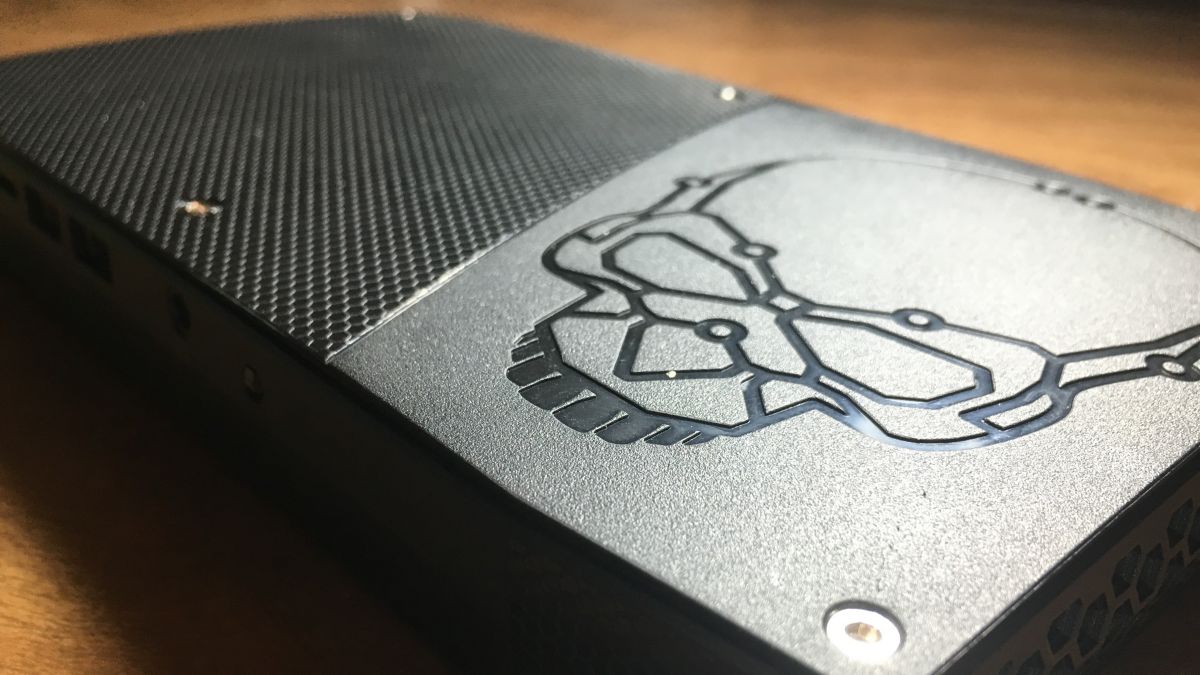
Introduction
What if you could build a Steam Machine that’s smaller than a console, more capable than the Xbox 360 and PS3 and fully customizable with the operating system (and even some components) of your choice? That’s exactly what Intel hopes to accomplish with its latest series of NUCs, its “Next Unit of Computing” hardware.
Technically called the NUC Kit NUC6i7KYK, Intel has opted to dub its latest mini computer outing “Skull Canyon” for short, saving you the embarrassment of recommending such a long-winded name for a piece of tech.
The humiliation you may have to undergo instead is from purchasing a PC clearly marketed toward gamers only with Intel’s integrated graphics to show off its gaming prowess. However, Intel promises this time is different. That’s because this time Iris Pro graphics have hit the scene, naturally integrated into a 6th-generation Skylake Core i7-6770HQ processor.
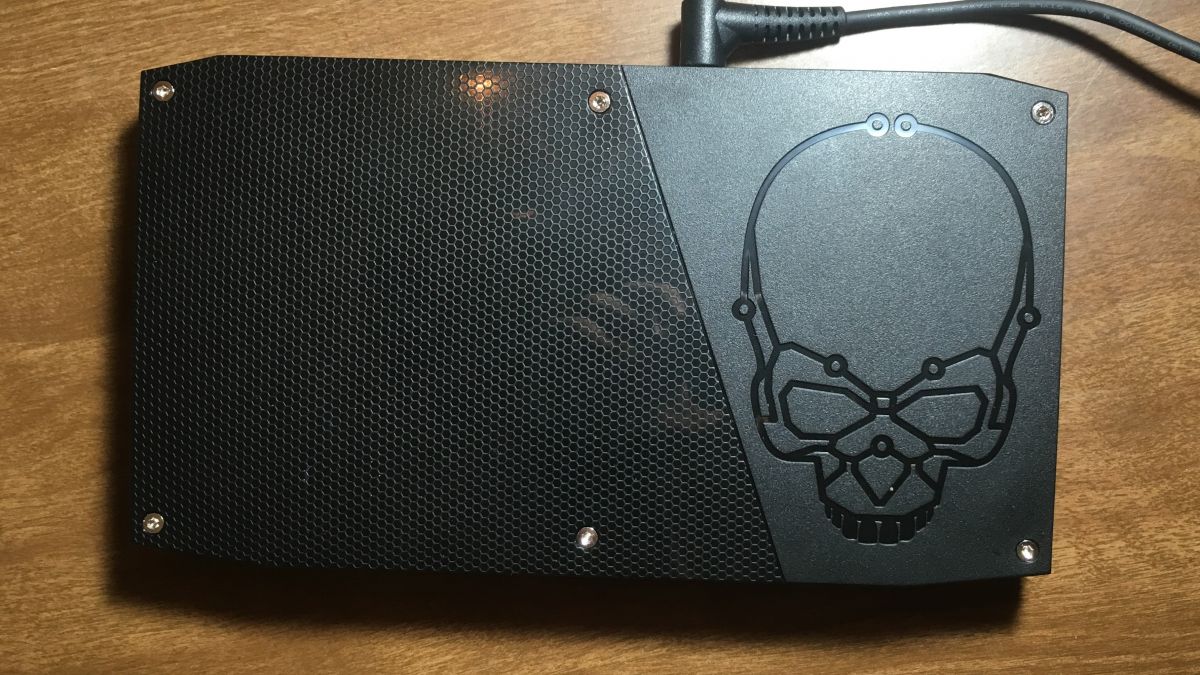
For $649 (about £444, AU$904), the Skull Canyon wouldn’t be a tough sell out of the box. It has the latest processor for getting your work done fast, a decent graphics solution for casual gaming in your downtime and a brilliantly designed, compact form factor with all the ports anyone would typically need in their day-to-day.
But, don’t be fooled, $649 is far from the final cost of the Skull Canyon NUC – it’s only the beginning. Being what’s called a barebones PC or a barebones kit, the Skull Canyon NUC ships boasting support for up to 32GB of RAM and either a SATA3 or NVMe solid state drive (SSD), but without either included in the box.
Rather, those items have to be purchased separately, which drastically raised the value of my own review unit from a humble $650 to around $1,050 (about £717, AU$1,461).

That excludes the cost of an operating system. If you opt for Windows 10, that could set you back up to 200 bucks more. Of course, you could always go for something like Ubuntu or SteamOS instead, which wouldn’t add any potentially unneeded expenditures.
That purchase isn’t quite as justifiable, especially considering the comparable price of a system with native support for a discrete graphics card. The Skull Canyon NUC is a niche product for a mindfully small audience. If you think you may be a part of that specific group, continue on ahead.
Design and Specifications
Through and through, the Skull Canyon NUC is positioned as a gaming product, and Intel’s design doesn’t let you see past that easily.
Featuring a bold outline of an anatomically correct cranium etched into its surface, the Skull Canyon NUC looks just as fit for a 14-year-old boy as any other gaming-centric hardware. That said, the chipmaker was generous enough to make the face plates interchangeable, including a second face plate free from the unruly, teenager-pandering design.

Like most PCs geared towards gaming, the Skull Canyon NUC can’t afford to be fanless. Making use of Intel’s higher-end Iris Pro graphics, it isn’t hard to see why. Intel’s onboard cooling solution runs loudly, louder than some liquid-cooled desktop towers. And, seeing as the Skull Canyon is more likely to actually sit atop your desk, the proximity gives its fans more authority over your eardrums.
Luckily, you can easily equip a pair of wired headphones with the Skull Canyon’s onboard 3.5mm jack, conveniently placed on the front of the system. Accessible ports like this one, make a good case for Skull Canyon to become your go-to computer for everyday tasks.
Having two USB 3.0 ports and an SD card slot an arm’s distance away feels like a luxury compared to crawling under your desk in search of an open connection.
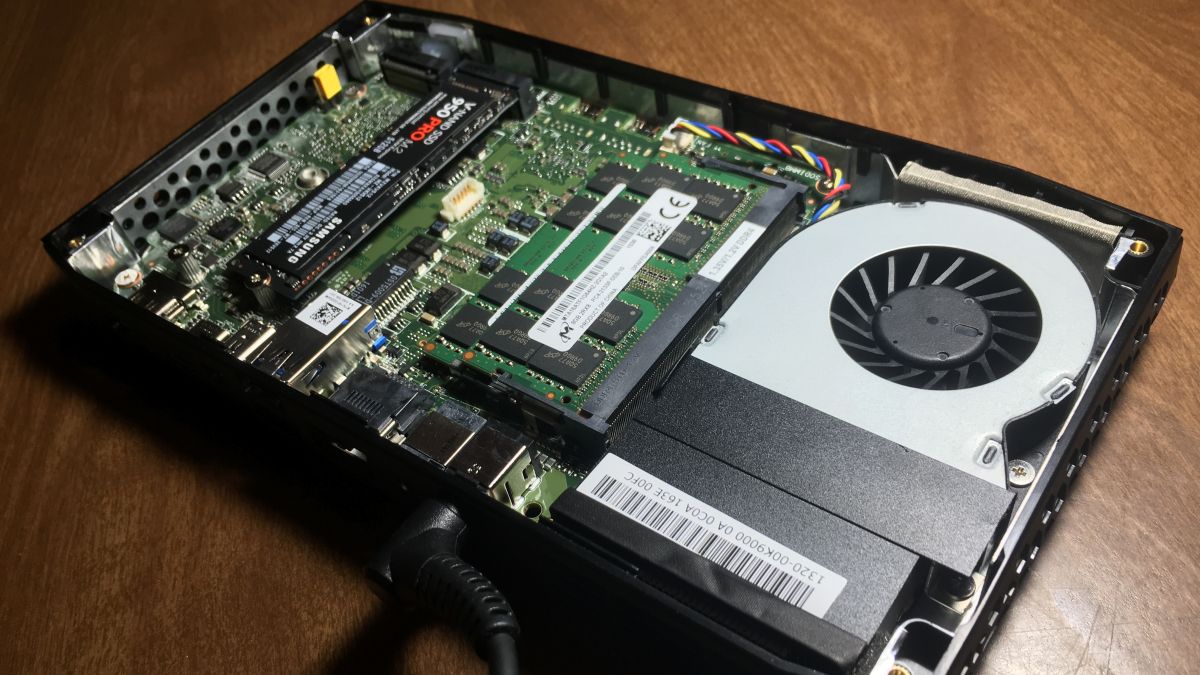
Cleverly, the ports you’ll need to get to less frequently, e.g. HDMI, DisplayPort, Thunderbolt 3, mini toslink for optical audio, Ethernet, power and a pair of extra USB-A connections, are located on the rear of the device. That’s also where the fan ventilation is, keeping the less eye pleasing aspects of the Skull Canyon a lot more covert.
Crack open the device from the bottom, and you’ll be greeted with an adorable little motherboard filled with equally shrunken connectors and headers where you’ll place your parts. It appears as though there’s room for up to two SSDs as well as two slots for DDR4 RAM, up to 32GB in total. This leaves plenty of room for expansion down the line.
Here’s the Intel Skull Canyon NUC configuration sent to techradar for review:
Spec sheet
- CPU: 2.6GHz Intel Core i7-6770HQ (quad-core, 6MB cache, up to 3.5GHz)
- Graphics: Intel Iris Pro Graphics 580
- RAM: 16GB DDR4 (2,133MHz)
- Storage: 512GB SSD (PCIe 3.0 x 4 NVMe)
- Optical Drive: None
- Ports: (Rear) 2 x USB 3.0, 1 x Thunderbolt 3 or USB Type-C, HDMI 2.0, Mini DisplayPort 1.2 (Front) 2 x USB 3.0, SD card slot, consumer infrared sensor, microphone and headphone jack
- Connectivity: Ethernet; Intel Dual-Band Wireless-AC 8260; Bluetooth 4.2
Prying open the Skull Canyon from the bottom is as easy as taking a small screwdriver to each of its four screws and unloading the shell using your fingernail or a butter knife. Taking off the top for switching up faceplates can be accomplished with probably the smallest allen wrench in your collection.
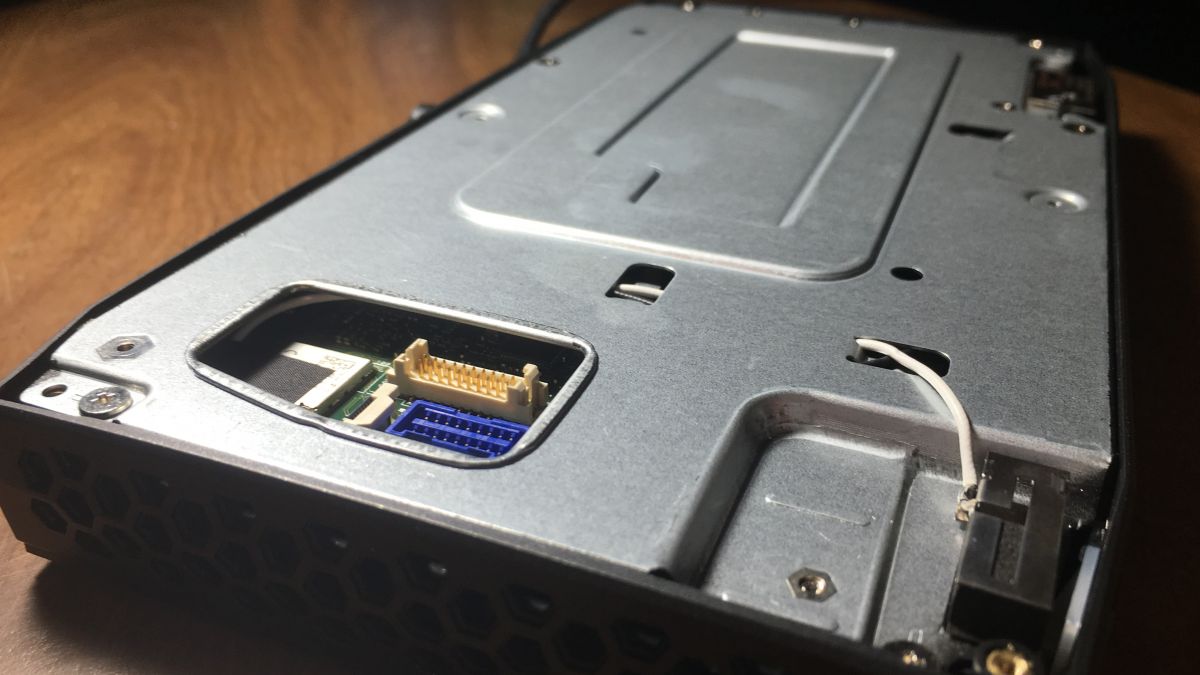
Now, how well does this thing game? Here’s how the Intel Skull Canyon NUC performed in our battery of benchmark tests:
Benchmarks
- 3DMark: Cloud Gate: 12,074; Sky Diver: 7,764; Fire Strike: 1,757
- Cinebench: CPU: 708 points; Graphics: 84 fps
- Geekbench: 3,772 (single-core); 13,716 (multi-core)
- PCMark 8 (Home Test): 3,755
- The Division: (1080p, Ultra): 8 fps; (1080p, Low): 25 fps
- GTA V: (1080p, Ultra): 4 fps; (1080p, Low): 34 fps
As a productivity device solely reliant on Intel integrated graphics, the Skull Canyon NUC fared sufficiently in our tests. As a gaming machine, it was actually quite dismal. The Division, for instance, can handle an average 25 frames per second (fps) at the lowest settings while Grand Theft Auto V managed a slightly more impressive 34 fps. Bump it up to the highest settings, and you’re faced with only 8 fps in The Division or a paltry 4 fps in Grand Theft Auto V.
For this reason, Intel is embracing support for the $499 (about £346, AU$687) Razer Core external graphics card enclosure, which lets users connect a standard desktop GPU to the NUC over a Thunderbolt 3 connection.
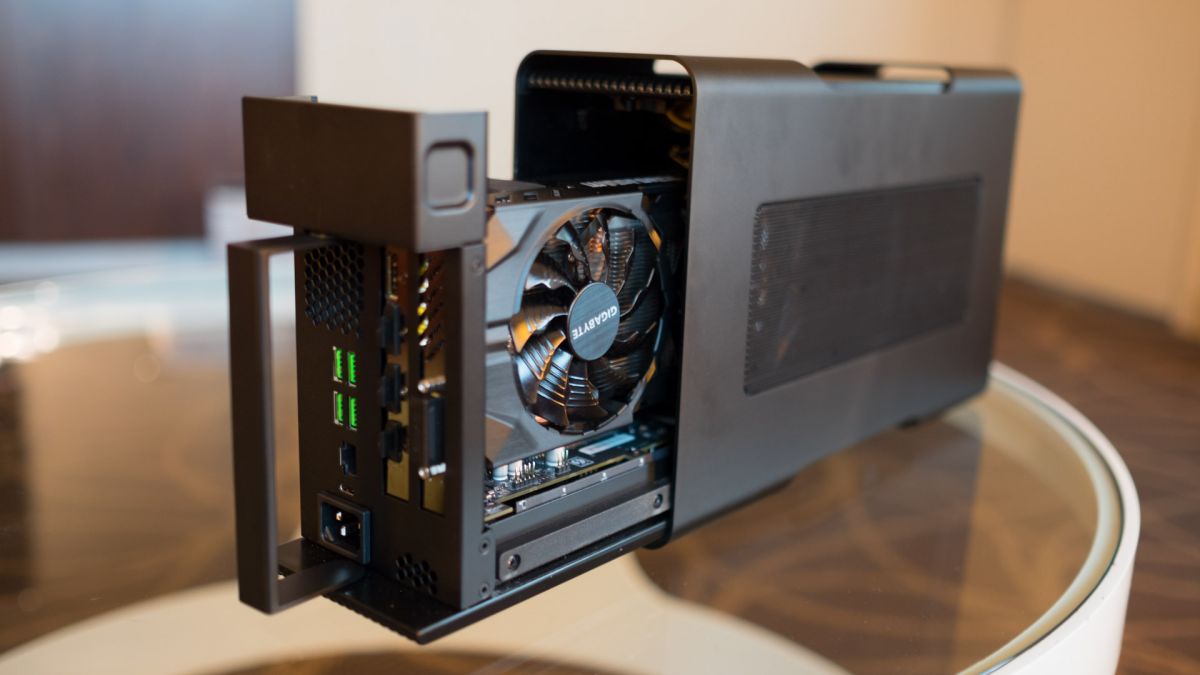
Apparently this peripheral can seamlessly upgrade your Skull Canyon from a mid-range workstation to a hardy gaming rig, thanks to its support for AMD cards up to the R9 Fury and Nvidia units up to the Titan X. As of this writing, Razer says it will be shipping out Core units to reviewers beginning in early June.
The underlying problem here is that, while the Razer Core compensates for the Skull Canyon’s primary inadequacy, it adds yet another expense to an already extortionate piece of kit. Now, assuming you want Windows 10, 512GB of storage space, 16GB RAM, and, say, an R9 Fury, you’re looking at a cost of about $2,169 (£1,482, AU$2,993).
That’s the price you have to pay for a compact gaming PC, right? Well, not exactly. While the Skull Canyon is small enough to fit in a binder, the Razer Core is about the size of a small form factor, MiniITX computer. But hey, at least it can be maneuvered separate from the graphics card holster.
Verdict
Without the Razer Core attached, the Skull Canyon NUC is deceptive, to say the least. Embellished by what Intel calls its “iconic” skull logo, you might confuse the NUC with something from Dell’s Alienware lineup. Don’t.
The Skull Canyon is fit for a particular kind of consumer, the kind that wants some control over which components go into their system without building a hulking desktop tower. It’s the kind of consumer that wants something powerful to do their work on with some light gaming on the side.
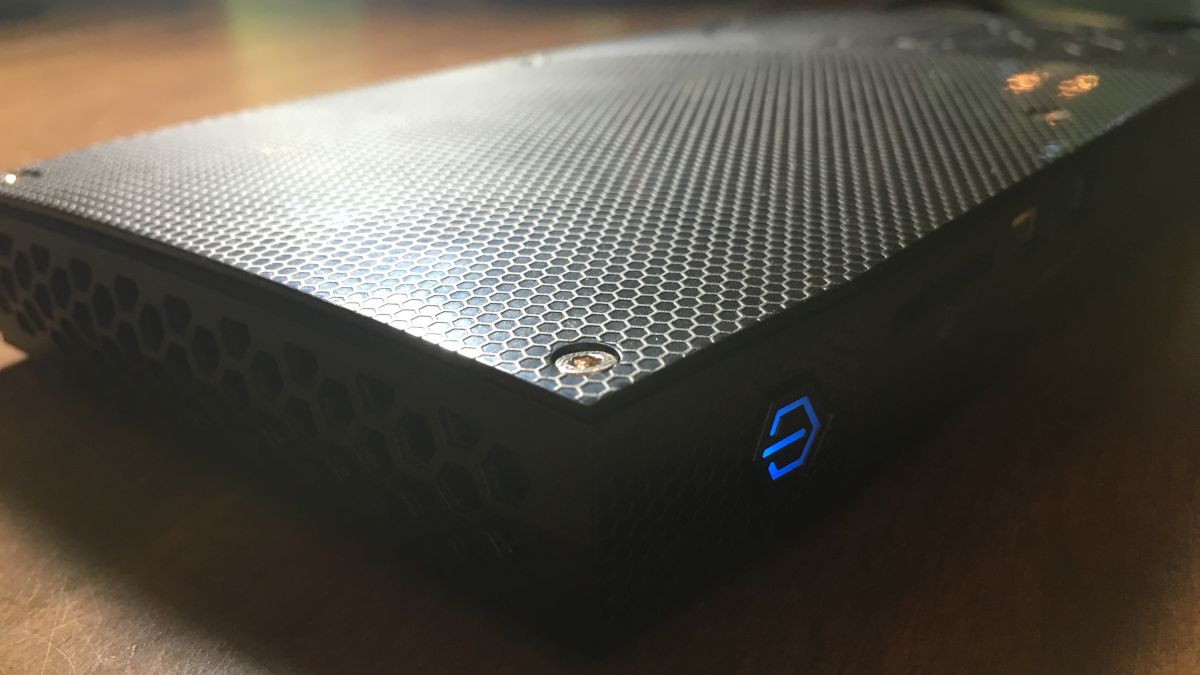
In fact, games a few years older than The Division and GTA V run flawlessly on the Skull Canyon, even at the highest settings. The original BioShock, for example, managed a constant 60 fps at 1080p. Likewise, Sonic Generations could pull off anywhere between 40 and 55 fps with everything cranked to the top. And, though legally ambiguous, you could probably get some decent emulation of classic games out of the Skull Canyon NUC too.
Demand anything more than that though, and you may want to turn that shopping cart around. Adding extra graphical components to the equation just isn’t worth the time, money or hassle.
Source: techradar.com










































… unless space and portability are priorities. I can see this being a great portable workstation for working in client's offices, something I do quite regularly. At home it could be velcroed to the back of my TV, completely out of the way, clearing more than half the desk space my laptop takes up (I'd still need a keyboard). And let's be clear, if you want a quad-core laptop with decent graphics, it is going to cost you a lot more than building one of these. I can definitely see this replacing my Surface Book later this year.